As a seasoned PC hardware expert, I’ve witnessed first-hand the monumental shifts in computing technology, and one constant remains: the pivotal role of effective cooling. The relentless quest for higher speeds and performance from our machines has turned the spotlight on a seemingly mundane yet critical aspect of PC health – airflow within the case.
My journey through countless rigs, from towering gaming behemoths to whisper-quiet workstations, has reinforced a simple truth: good airflow is the lifeline of any system. The symphony of cooling begins with a well-orchestrated airflow that navigates through the labyrinth of cutting-edge components.
It’s not merely a matter of keeping temperatures down; it’s about elevating the entire system’s efficiency and extending the longevity of each precious component. As enthusiasts push their hardware to the limits, knowing about the nuances of airflow can be the difference between a PC that soars and one that stutters under pressure.
Assessing Your Current Airflow
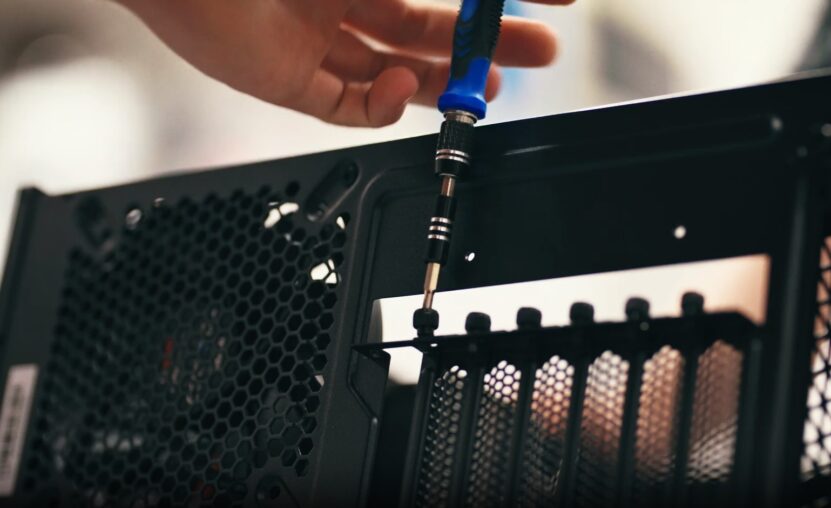
Before you can improve airflow, you need to know where you stand.
Identifying Airflow Direction and Obstacles
Your PC’s case fans have arrows indicating the direction in which they move air. Open your case and take note. Look for obstructions like tangled cables or poorly positioned drives that could impede air movement.
Evaluating the Effectiveness of Existing Fans
Check if your fans are spinning correctly and at the right speeds. Use software tools to monitor their performance. Are they moving enough air, or is it time for an upgrade?
Analyzing Case Design and Fan Placement
Your case design determines how air travels through it. Examine where the intake and exhaust fans sit. Are there enough vents? Could you place fans more strategically?
Upgrading Fans and Components
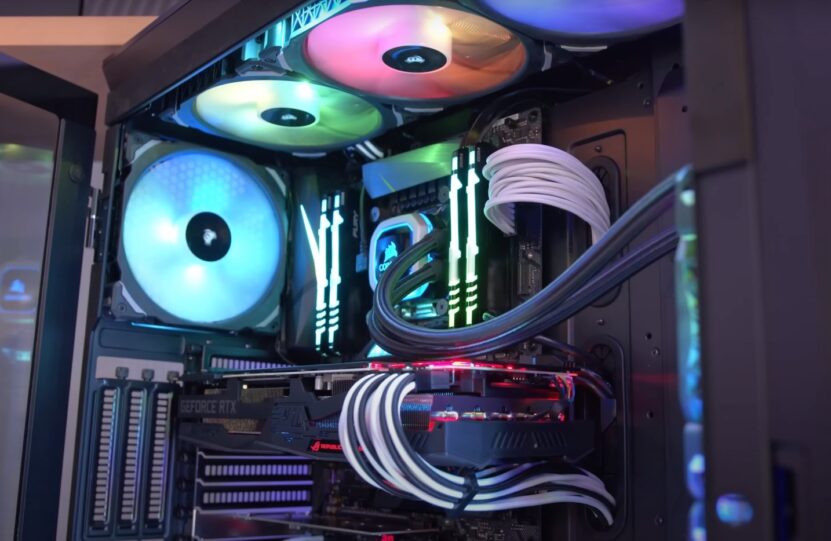
To elevate airflow, sometimes you need to bring in new recruits.
Selecting High-Performance Fans
Quality fans matter. Look for ones with high cubic feet per minute (CFM) ratings. These fans move more air through your case, keeping components cooler.
Balancing Airflow and Noise
| Fan Size | Average CFM | Noise Level (dBA) |
| 120mm | 40-70 | 20-30 |
| 140mm | 50-100 | 15-25 |
| 200mm | 70-150 | 10-20 |
Larger fans can move the same amount of air at lower speeds, reducing noise. It’s about finding the sweet spot for your needs.
Prioritizing Static Pressure or Airflow
There are two types of fans: those with high airflow and those with high static pressure. High airflow fans are great for unobstructed spaces, while static pressure fans push air more effectively through dense obstacles like radiators or filters.
Upgrading to Liquid Cooling
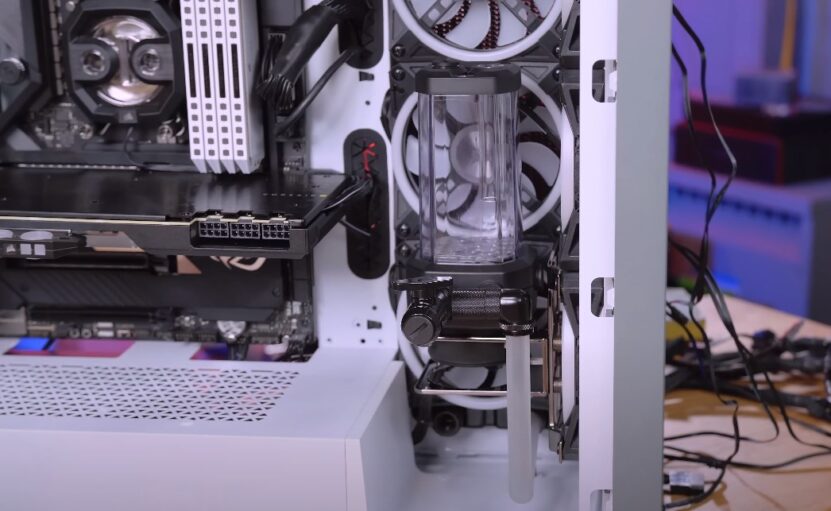
Liquid cooling can take your temperature management to the next level, especially for high-performance CPUs or GPUs. It’s efficient and quieter than air cooling. But it also requires more maintenance and has a higher upfront cost.
The Role of Radiators in Airflow
Radiator placement is crucial. Mounting it at the front can bring cool air in, while the top mount works as an exhaust, helping hot air escape.
Integrating Liquid Cooling With Air Cooling
Your system should balance liquid and air cooling. Ensure radiators have enough fan support to push the heated air out effectively.
Reorganizing Internal Layout
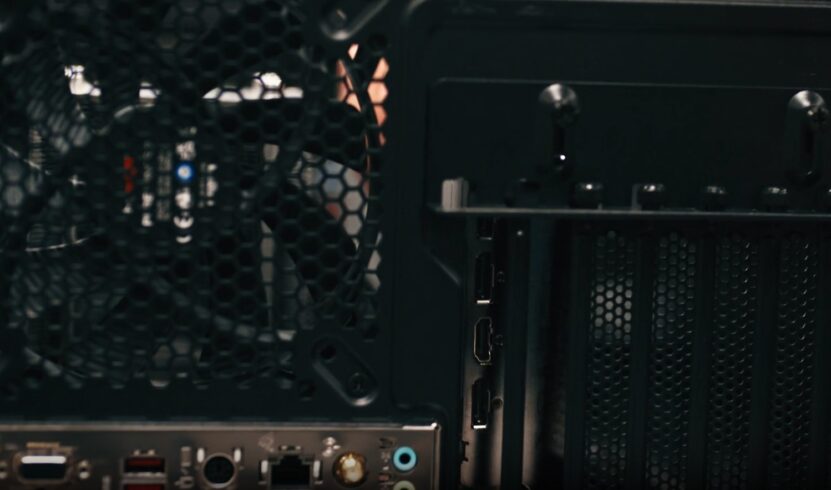
A clutter-free interior makes for smooth airflow.
Managing Cables for Optimal Airflow
Cable management is not just about aesthetics. Route cables neatly behind the motherboard tray or use cable ties to keep them out of the airflow’s path.
Positioning Components for Better Ventilation
Place heat-generating components like SSDs and HDDs away from each other when possible. Space them out to avoid hot spots within the case.
Using Modular Components for a Clean Build
Modular power supplies and components allow you to connect only the cables you need, reducing clutter. This can dramatically improve airflow.
Final Touches for Maximum Airflow Efficiency
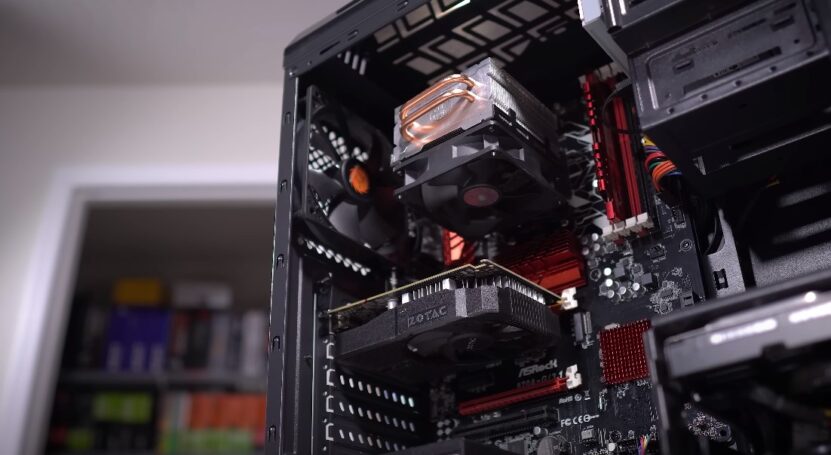
With the right components in place, it’s time for fine-tuning.
Installing Dust Filters
Dust filters keep the insides clean, but they can hinder airflow. Choose fine mesh filters that balance dust protection with good air movement.
Adjusting Fan Speeds
Modern motherboards allow for fan speed control. Adjust speeds based on temperature readings to ensure adequate cooling without excess noise.
Regular Maintenance
Keep your PC clean. Dust build-up can slow fans down and clog vents. A can of compressed air can work wonders every few months. Optimizing PC case airflow combines a thoughtful approach to component selection with strategic positioning.
It’s a mix of science and art with a pinch of regular upkeep. By following these steps, you’ll keep your PC running cooler, performing better, and lasting longer.
Crafting the Perfect Airflow Path
Creating an efficient airflow path is essential for any PC. It’s not just about adding fans; it’s about guiding the air effectively through the system.
Positive and Negative Air Pressure
- Positive Pressure: When you have more intake than exhaust, it creates positive pressure. Dust is less likely to enter the case, but it can lead to warm air getting trapped inside.
- Negative Pressure: More exhaust than intake generates negative pressure. While it often results in better cooling, it can draw in more dust.
Balancing these pressures is key. Too much of either can be detrimental.
Strategic Fan Placement
| Fan Position | Purpose | Recommended CFM |
| Front | Intake | 50-70 |
| Top | Exhaust | 40-60 |
| Rear | Exhaust | 40-60 |
| Bottom | Intake (if available) | 40-60 |
Front and bottom fans should generally pull air in, while top and rear fans should push air out. This setup uses natural convection and aids in creating an efficient airflow path.
The Role of Fan Curves
Use your BIOS or fan control software to create custom fan curves. These will adjust fan speeds based on temperature, ensuring optimal airflow without unnecessary noise.
Advanced Airflow Techniques
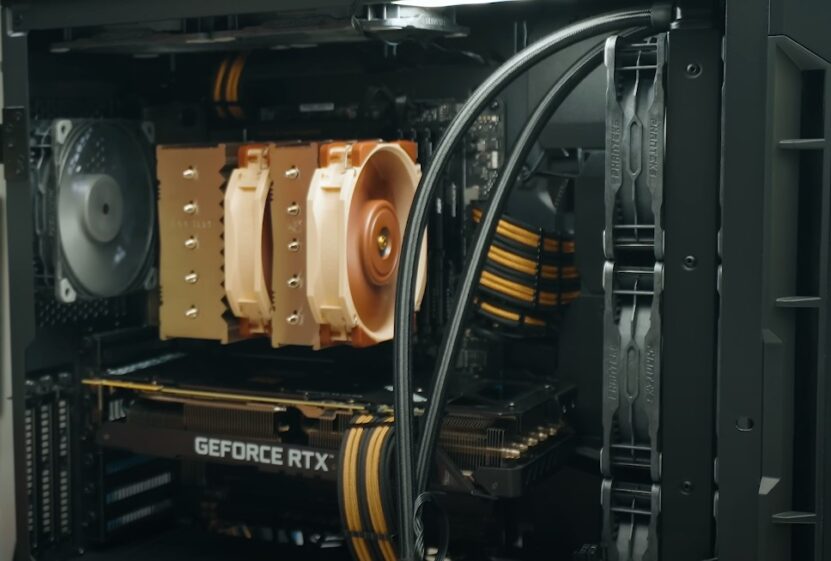
For enthusiasts looking to push their systems further, there are advanced methods to consider.
Utilizing Ducting and Shrouds
Ducts and shrouds can direct airflow to the hottest components, like the CPU and GPU. By focusing on airflow, you can significantly improve cooling in targeted areas.
Implementing Phase-Change Materials
Phase-change materials absorb and release heat as they change between solid and liquid states. Integrating these into your PC can help regulate temperatures but requires a sophisticated setup.
Experimenting with Airflow Direction
Flipping the script on traditional airflow can yield interesting results. For instance, some users report improved temperatures by reversing the flow, making the top and front fans exhaust and the rear fan intake. This unconventional approach may be worth testing in your own setup.
Considering the Impact of External Factors
Remember that room temperature and case placement affect internal temperatures. Keep your PC away from heat sources and in a well-ventilated area.
Monitoring and Adjusting for Peak Performance
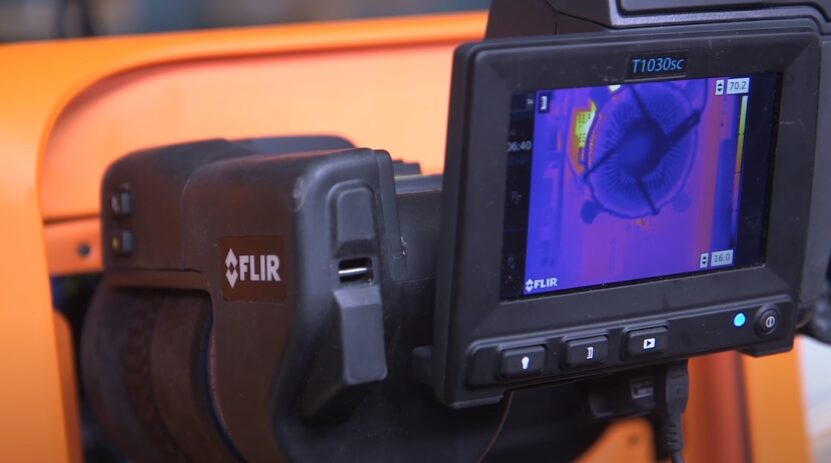
With all elements in place, ongoing vigilance is crucial.
Using Thermal Imaging and Sensors
Thermal cameras or heat sensors can show where the hot spots are. Use this information to adjust fan placement and speeds.
Stress Testing and Benchmarking
Stress tests can push your system to its limits. Monitor temperatures during these tests to see how well your cooling setup holds up.
Evaluating the Results
| Component | Ideal Temperature Range |
| CPU | 70-80°C (under load) |
| GPU | 65-75°C (under load) |
| Motherboard Chipset | 40-50°C (under load) |
Use benchmarking results to compare temperatures before and after adjustments. Aim to keep components within their ideal temperature ranges.
Fine-Tuning for Consistent Cooling
If temperatures are too high, revisit your setup. Adjust fan curves, reposition fans, or consider upgrading components to achieve better results. In crafting your PC’s cooling strategy, keep in mind that airflow is a balance.
It’s about coordinating the right components, positioning them strategically, and adjusting based on performance data. With the right tweaks and maintenance, your system will not only stay cool but also excel in performance, ready to tackle any task with a chilled resolve.
FAQs
Can I improve the airflow in my PC case without buying new components?
Absolutely. Adjusting the placement of your current components and improving cable management can greatly enhance airflow.
Make sure that cables are neatly tied and tucked away from the main airflow paths. Also, ensure that larger components like GPUs do not obstruct fan intakes or exhausts.
How often should I clean the dust filters and fans in my PC for optimal airflow?
Dust filters and fans should ideally be cleaned every 1-3 months, depending on your environment. If your PC is in a room with a lot of dust or pet hair, you might need to clean it more frequently. This will ensure that airflow isn’t being restricted by dust buildup.
Is it possible to have too many fans in a PC case?
Yes, having too many fans can create turbulence within the case, disrupting the smooth flow of air and potentially leading to worse cooling.
It’s better to have a balanced number of intake and exhaust fans to maintain an effective airflow path.
How do I know if my PC case has good airflow?
A good indication of airflow is consistent and low component temperatures, especially under load. If your hardware stays within optimal temperature ranges during intensive tasks and there’s a steady stream of air coming from the exhaust fans, your case likely has good airflow.
Can vertically mounting my GPU affect airflow?
Vertically mounting a GPU can affect airflow if it’s too close to the side panel, as it can restrict the intake of air to the GPU fans.
It’s important to ensure there’s enough space between the GPU and the case’s side panel to allow for proper air intake.
Do fan controllers make a difference in managing PC case airflow?
Fan controllers can make a significant difference because they allow you to adjust the speed of your fans based on temperature, which helps in maintaining a balance between noise and cooling performance.
Some also offer the ability to create profiles for different usage scenarios, such as gaming or content creation, which can optimize airflow when it’s needed most.
Final Words
Improving airflow in your PC case doesn’t stop with installation. It’s an ongoing process of monitoring, tweaking, and sometimes overhauling. But the payoff – a smooth, cool-running machine – is well worth the effort.
Get started on optimizing your PC’s airflow today and enjoy the benefits of a cooler, quieter, and more efficient computer. Our website also covers various troubleshooting topics, and we recently wrote about no display problems on new PCs, so make sure to check it out.

